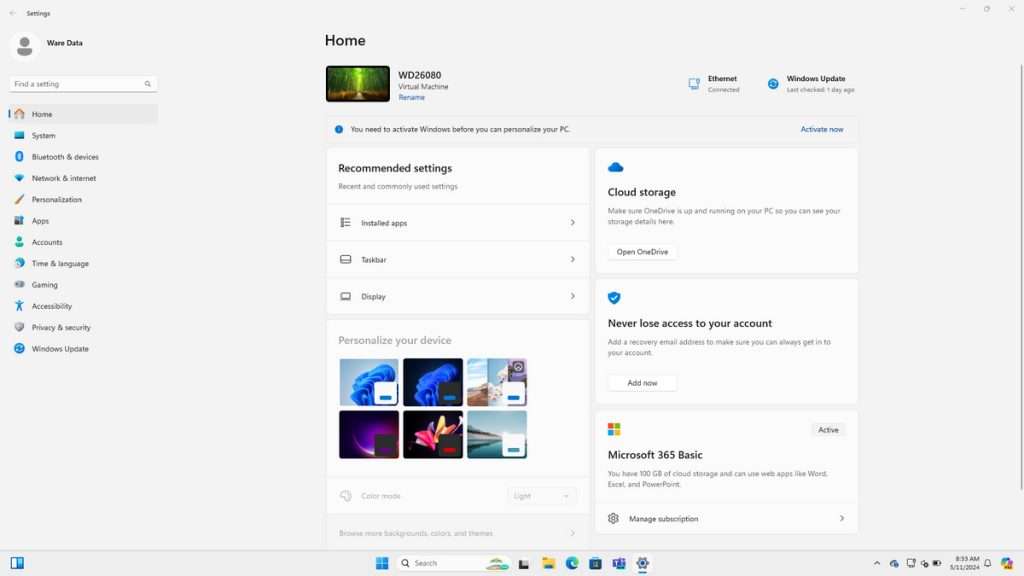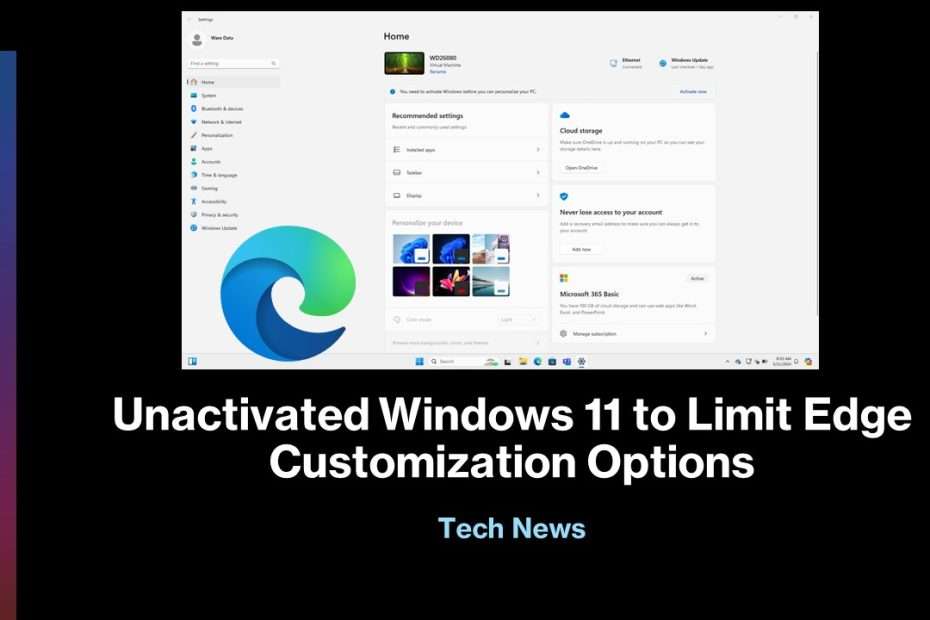Windows activation has been a requirement for PC users since the Windows XP era, although Microsoft has made it easier with Windows 10 and Windows 11. In a traditional computing environment, every Windows instance needs to be purchased and activated to unlock full capabilities. Activation helps Microsoft ensure that a copy of Windows is genuine and hasn’t been used on more devices than allowed by the software license terms.
On a non-activated OS, customers have limited options for system customization, and similar limitations could soon apply to the Edge browser. While users can still access most of Windows’ features without activation, they won’t be able to customize the desktop or the OS interface. The system’s settings page will display a “Windows is not activated” message on the screen, making life a bit harder for non-licensed users or pirates.
In April, a group of beta testers who were trying out early versions of Microsoft Edge, the default browser on Windows, stumbled upon a new feature related to Windows activation. They found a hidden setting in the Canary build of Microsoft Edge, which suggested that Microsoft was planning to introduce new limitations for users who haven’t activated their copy of Windows.

The feature, which was discovered behind a complex command line switch, hinted at potential restrictions on Microsoft Edge’s settings for users with unactivated Windows installations. While the exact implications were unclear at first, it marked a new development in Microsoft’s efforts to encourage users to activate their operating system.
Microsoft has confirmed a new change that will affect users of Windows and Microsoft Edge. The company is testing a feature through the Edge Canary channel, which will limit access to certain customization options in the browser’s Settings page.
If a user’s Windows installation is not activated, a future version of Microsoft Edge will display a notification at the top of the Settings page, indicating the “non-activated” state of the operating system. This change will prevent users from accessing specific customization options, further encouraging users to activate their copy of Windows to unlock full functionality.
The upcoming limitation on Microsoft Edge’s customization options is unlikely to deter users who refuse to activate Windows, as they can still use alternative browsers like Google Chrome or Mozilla Firefox, which will retain full compatibility with unlicensed Windows installations. According to StatCounter’s latest data, Microsoft Edge is currently used by only 10% of Windows users, making it a minor inconvenience for most users.
Windows activation has a history dating back to the Windows XP era, where it was known as “Microsoft Product Activation” and included robust digital rights management (DRM) technology to combat software piracy. While the approach has evolved over time, Microsoft continues to implement measures to encourage users to activate their copies of Windows, including limiting access to certain features and customization options.
Maybe you liked other interesting articles?

